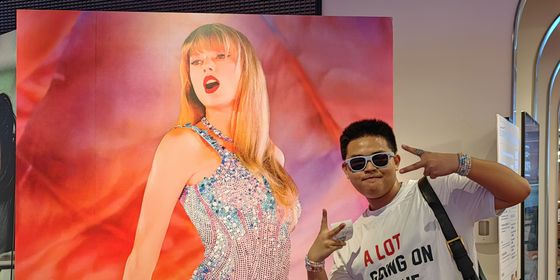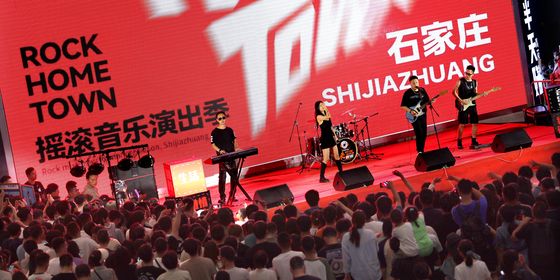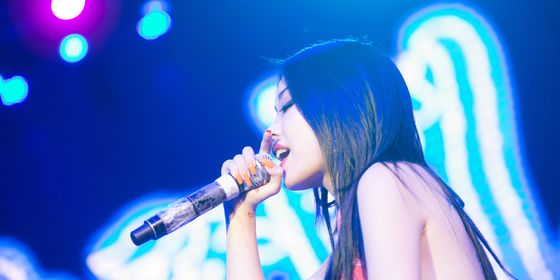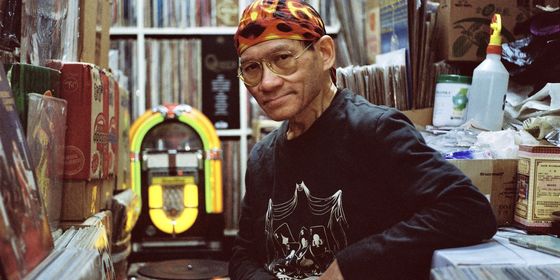Grinding through China’s hip hop scene
Find part 1 here.
At the same time, local non-profit advocacy organizations with government support such as the China Hip-Hop Union Committee, founded in 2013, have made it their goal to turn hip hop into a mainstream art form largely devoid of contrarian or even aggressively materialistic elements. As such, the cultural element of introducing American hip hop into China yields some hilarious results. Young Peach, a young MC with a growing following, headlines in a music video where the eponymous rapper pulls a pistol from his waistband, backing one of his posse into a wall after losing a game of dice, but fails to off the poor sap, having received a call on his cell phone. As a place where the idea of a gangster carrying a gun is almost as foreign as the notion of hip hop itself, such a hilarious cultural miscommunication can almost be seen as a form of legitimate cultural exchange. It shows how music may not necessarily be a universal language; Young Peach’s extensive use of the N-word and it’s popularity among his followers perhaps belies how little they understand its context and history: “big dick, don’t mess with Zohan,” he croons in autotune. His LinkedIn page features such taglines as: “Street Hustla University” under education and lists “rap, music, party, comics, and skateboard” as his primary interests.
But not all attempts at creating hip hop culture in China are quite so blasé: Zhao Hong, or MC Little Tiger, otherwise known as Xiao Laohu, is another figure in the rap space who has made a name for himself. As a formative member of the Beijing hip hop scene, Zhao MCed in college, forming a name for himself as a freestyle rap battle warrior, during which he clinched the Dragon vs. Tiger title of champion twice. Liang, also Zhao’s producer, credits him with the brilliance of his lyrics: “I think his lyrics are more abstract; it’s more like reading a lyrical comic book or animation where there’s a very strong logic in his stuff, but you wouldn’t think about unless you read or hear the lyrics a few times,” Liang says. A listen to Little Tiger’s latest release “Juliana” reveals a funk and jazz-inspired groove over which he’s able to build his word palaces: his flow and rhythm lead the listener down halls of vivid and scenic imagery.

Fans cheer MC Webber at his album launch concert. Hip hop in Beijing is building a growing fan base.
One of the challenges of rapping in Mandarin is the difficulty of the rhythmic syncopation—the stretching and contracting of rhythm—that makes English rap such an attractive listening experience. As a language of single syllables, making these rhythmic stretches is incredibly difficult for artists and their strings of single syllables tend to borderline on the monotonous.
The stretching and contracting of the pulse atop the groove is what gives hip hop its distinctively edgy and tense feel, also known as syncopation. Unfortunately, these single syllables are difficult to stretch into tension and resolution. Shuochang (说唱 , literally, “talk and sing”), an age-old form of balladic artistry, tends to stress the longer form of the song, rather than smaller micro-subdivisions that give English rap its tooth and bite. That being said, as a language with hundreds of dialects, rapping in Mandarin, while difficult, can be an incredible crossroads of identity, language and culture. Rappers from Chengdu, who often rap in their standard Sichuanese, often maintain a laid back flow and pulse over their grooves that hint at the syncopation that English-language rap-listeners often crave for. Rappers from Beijing, on the other hand, have the advantage of the lip-curling snarl of er-hua (儿化) that delivers extra sting to their rhymes.
While a few of the champions of hip hop have even gone on to make full careers out of their extemporaneous verbal skills, it’s a rarity still, in the scene, today. Many of Beijing’s rappers still have day jobs or perform other kinds of music. “The scene is really still very small, if you think about it,” Liang says. “And while that means there isn’t as much money to be made from it, it also means there’s less control over it.” What that means is that despite hip hop’s lack of popularity (and general failure to break into mainstream pop music) it’s got enough inertia to develop on its own. And despite walking a fine line between contrarian elements and downright shock-worthy hooks, MCs like Dawei, who have found themselves before on the wrong end of the stick, have also found ways of getting around censorship, in order to deliver their music to audiences. The internet has played a huge role in delivering content—websites like Xiami and Douban, who host huge databases of music, don’t have much issue when it comes to hosting smaller independent artists, even if it means having edgier content.
As a form of music that’s not fully developed, there’s a lot of work to be done to build a Chinese hip hop dream. On one hand, some artists are still imitating American musicians as a way of becoming famous. On the other hand, others have removed some key elements from the groove or production elements that create huge aesthetic problems for their music. “How to make
the music stick? That’s a good question,” Liang says, his street drawl lingering on the word “question”. “When I say hip hop is shifting, I mean that there are purists out there who grew up on hip hop culture with graffiti and breakdancing and stuff, but now there are places where kids grew up and it wasn’t like that.” Liang might be referring to the popularity of breakout artists like Macklemore, a white surburban Portland rapper who won a Grammy for Best Hip Hop Album in 2012, but also seemed to signal the end of hip hop as a form of black history. “That’s what I mean when I say that those changes reflect a step behind, in China.”
“The Rap Battle for China, cont’d” is a story from our newest issue, “Family”. To read the whole piece, become a subscriber and receive the full magazine. Alternatively, you can purchase the digital version from the iTunes Store.












